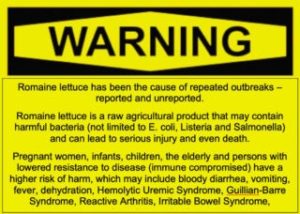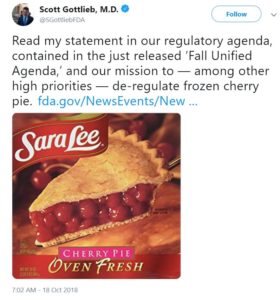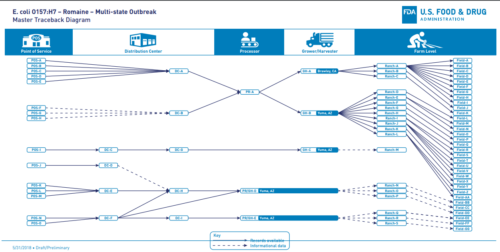The FDA held a public meeting last week on lab-grown “meat,” meaning, in FDA-speak, “foods produced using animal cell culture technology.” The meeting agenda is here.
At issue are:
The FDA’s announcement of the meeting, and FDA Commissioner Scott Gottlieb’s statement staked FDA’s territory over these products. Gottlieb said:
The FDA has a long history of ensuring food safety and applying our statutory framework while supporting rapidly evolving areas of technological innovation in food. The agency currently evaluates microbial, algal and fungal cells generated by large-scale culture and used as direct food ingredients. The agency administers safety assessment programs for a broad array of food ingredients, including foods derived from genetically engineered plants, and also manages safety issues associated with cell culture technology in therapeutic settings.
But if these foods are meat, then USDA is responsible for their regulation. In a statement to Politico (behind paywall), a USDA spokesperson said:
According to federal law, meat and poultry inspections are the sole purview of USDA, so we expect any product marketed as ‘meat’ to be USDA’s responsibility. We look forward to working with FDA as we engage the public on this issue.”
Politico points out what’s at stake in the jurisdictional dispute.
There are at least 10 lab-grown meat companies across the globe that are furiously working to figure out how to get their products to market. Some of the startups are driven by a desire to reduce animal agriculture’s environmental footprint as developing countries increasingly drive demand for meat and dairy products. Major investors who’ve moved to get into the action include innovators like Bill Gates, Richard Branson, and Tyson Ventures, an investment arm of meat giant Tyson Foods.
The meat industry, as you might expect, does not want these foods to be called “meat.” But the industry has not reached agreement on strategies (some meat companies have invested in lab-grown meat startups).
The US Cattlemen’s Association (USCA) in February asked federal government regulators to adopt a definition for meat that would exclude cell-cultured products (often called “clean meat“). This week though, the more-powerful National Cattlemen’s Beef Association (NCBA) asked the same regulatory agency to rule the opposite.
The NCBA wrote a letter to USDA stating its position:
NCBA is alarmed by the growing number of flagrantly deceptive food product labels proliferating the marketplace. Consumers have the right to expect that the information on food labels is truthful and not misleading, just as all food products should expect to compete on a fair, level playing field…NCBA firmly believes that the term beef should only be applicable to products derived from actual livestock raised by farmers and ranchers.
Global Meat News has a good summary of the industry’s concerns.
Four members of Congress chided the FDA for jumping into this:
Cell-based food technologies and products are an emerging science, and both agencies should be working collaboratively on a scientific approach towards a framework to regulate these products.
Good luck with that. The Food and Environment Reporting Network (FERN) has a report on the FDA meeting. I’m quoted:
Between the two agencies, I favor FDA…USDA’s primary role is to support and defend industrial agricultural production. The agency tolerates, but is unenthusiastic about organics. It will do the same for lab-based meat.
The FDA has opened questions about lab-grown meat for public comment. File comments here. The deadline is September 25.
Added comment
At a Politico Summit meeting today,
FDA Commissioner Scott Gottlieb said…that the agency is working closely with USDA on early efforts to establish a regulatory framework for lab-grown meat, or “cell-cultured foods,” the FDA’s preferred name for it.
We shall see.





